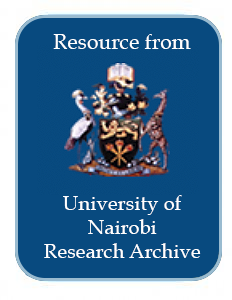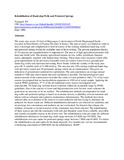Location
Our Vision is to be a world-class university committed to scholarly excellence.
Our Mission is to provide quality university education and training and to embody the aspirations of the Kenyan people and the global community through creation, preservation, integration, transmission and utilization of knowledge.
Core Values
In order to realize the above vision and mission, certain shared values shall be nurtured. There is great need for the University to be guided by the right values derived from the virtues and moral standards of the Kenyan and wider society.
Core Functions
Teaching and Learning: The university offers innovative , relevant and market driven academic programmes , both at undergraduate and postgraduate levels with inbuilt quality control systems the university also provides an environment and policy framework for undertaking high quality and relevant research
Members:
Resources
Displaying 221 - 225 of 298The rationalisation of residential densities in an inner city area of Nairobi
The need for a rational land utilisation in the inner city areas of Nairobi is becoming increasingly recognised in the urban development. In particular, it is made more urgent by the rapidly increasing levels of urbanisation that has resulted into acute shortage of residential land for low-income households. Using the neighbourhood of Bahati Estate in Nairobi as a case study, this paper analyses the land utilisation in the inner city residential areas in Nairobi that were built before 1963. The analysis reveals that land in these neighbourhoods is currently under-utilised.
Valuation of Up-market Residential Properties in Nairobi-Kenya
Housing occupies an important position in the Kenyan psyche along with the concept of home ownership. The residential developments and investments attract both institutional, corporate organisations as well as private individuals. There are indications that the residential market in Nairobi is very active and that most of the valuation firms in Nairobi cany out market-based valuation of residential properties.
Environmental impacts of some scenarios of land-use Change: a gis assisted assessment of soil erosion hazard in The Mutirithia-Kariunga area of Laikipia District, Kenya.
Characterizing soil erosion hazard and its spatial variability is critical for maintaining
user confidence in planning soil- and water- conservation programmes and general
land-use management. Predicting the average rates of soil erosion for a combination
of specific soil and land-use types is vital. This is because such predictions form a
basis for providing guidelines for effective erosion control.
The purpose of this investigation was to examine the erosion effects of alternative





